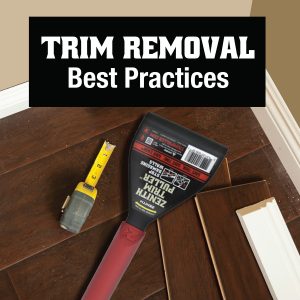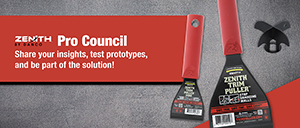
When it comes to remodel projects involving trim removal, the Zenith Trim Puller is a go-to tool for many enthusiasts. However, mastering this versatile trim puller tool requires a keen understanding of its proper usage. In this blog, we’ll explore common mistakes made with the best trim puller tool, specifically the Trim Puller pry bar tool, and provide insights on how to avoid them. From preventing tool bending to applying the right amount of force, let’s ensure your trim removal projects are smooth and efficient.
Underestimating Trim Pullers durability
Made with high carbon, heat-treated steel, the Trim Puller is built to withstand the rigors of remodeling projects. Ignoring the tool’s durable construction may result in premature wear or breakage. Recognize the power in durability—this robust tool is designed to last, providing reliable performance project after project.
One example of this can be through the improper handling that leads to tool bending. The Trim Puller, when not grasped correctly, is susceptible to bending, affecting its efficiency and longevity. To avoid this, ensure a firm and correct grip on the tool, allowing it to work seamlessly without compromising its structural integrity.
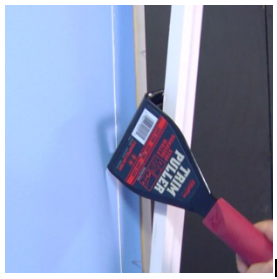
Handling of the Tool
A common oversight when using the Trim Puller is not applying the correct grip and adequate strength. Proper handling of the tool is crucial for an efficient and controlled removal process. The Trim Puller is equipped with a comfort grip that features shock-absorbing EDPM rubber, contributing to an ergonomic design.
Underestimating the importance of this grip can result in discomfort and reduced control during use. Embrace the ergonomic design to ensure a comfortable and controlled grip, ultimately enhancing the user experience and minimizing
Prying Upwards vs. Sideways
Many users make the mistake of prying upwards instead of sideways. The Trim Puller’s design is optimized for sideways movement, allowing for effective and damage-free trim removal. Prying upwards not only hinders the tool’s functionality but may also damage the trim and surrounding surfaces. Always keep the Trim Puller parallel to the trim material for efficient and smooth removal.
Additionally, understanding the pry bar tools integrated wedged center is a key feature that prevents damage to both the trim and the wall during removal. Neglecting to recognize and utilize this aspect may result in inefficient removal and potential harm to surfaces. Always position the Trim Puller with the wedged center engaged to protect both the trim and the surrounding wall.
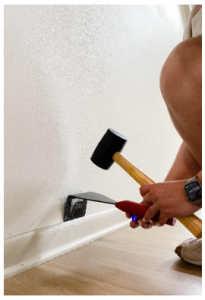
Multi-Purpose Functionalities
The Trim Puller’s ground bevel on the edge allows it to function not only as a trim removal tool but also as a shim for leveling cabinet bases. Overlooking this multi-tool functionality limits the Trim Puller’s potential. Explore its versatility, utilizing it not just for trim removal, but also as a valuable component in leveling applications. For smaller areas or quick projects, the Mini Trim Puller is ideal for the job. The Mini Trim Puller tool functions identical to the original Trim Puller, but is best for beginner DIY’s or as a tag along tool on the go. The Mini Trim Puller is available at the Home Depot, Menards, and Amazon.
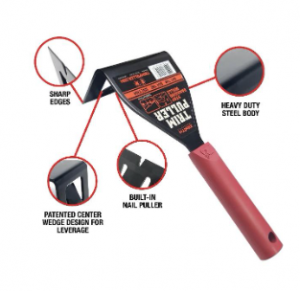
Impatience: Rushing Leads to Compromised Results
One prevalent mistake is impatience during the trim removal process. Rushing can result in uneven force application, potential damage to surfaces, and an overall compromised outcome. Take your time, apply consistent pressure, and allow the Trim Puller to work its magic for a seamless removal experience.
Mastering the Trim Puller involves more than just having the right tool—it’s about understanding its nuances and using it correctly. By avoiding common mistakes like tool bending, insufficient force, improper prying angles, incorrect tool selection, and neglecting safety measures, you’ll elevate your trim removal game to a whole new level. Now, armed with the knowledge of these pitfalls, embark on your next DIY project with confidence and precision, pick up a Trim Puller today at the Home Depot, Menards, or Amazon.


